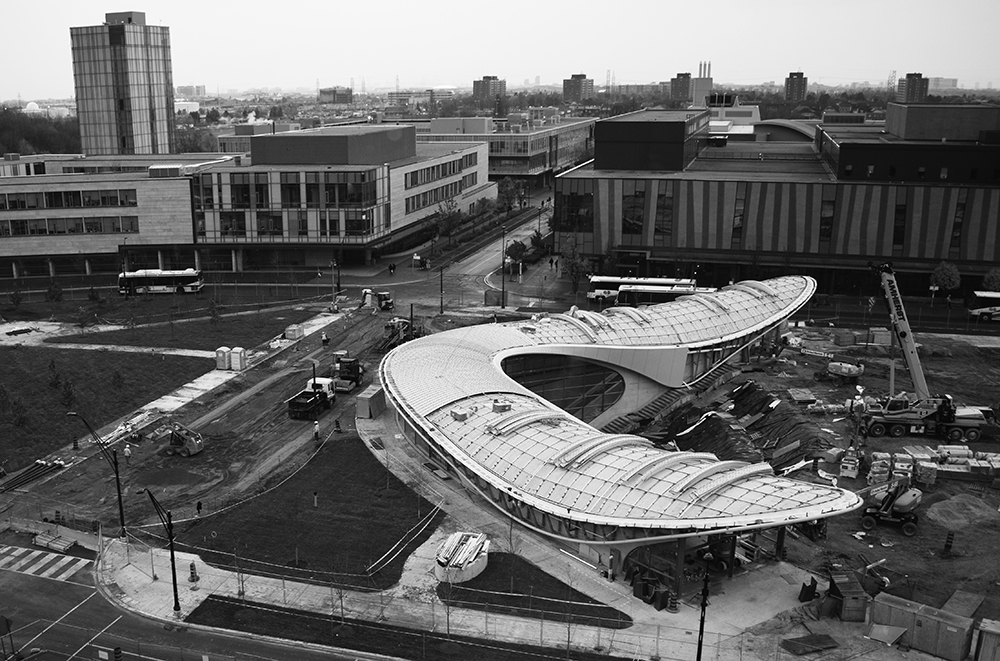Hassam Munir | Executive Editor (Online)
Featured image: The York University Subway Station is nearly 85 per cent complete, but has missed deadlines and gone over budget. | Fatema Ali
Toronto Mayor John Tory visited the York subway station in late November while campaigning to boost funding for the expensive and over-budget transit projects.
In December, the TTC announced that it faces a $72.6 million shortfall in 2017 even when increased fares and parking costs, which went into effect on January 1, are taken into account. CEO Andy Byford asserted that the TTC would even consider service cuts if the City of Toronto, which is cutting down on its own 2017 budget, does not cover the difference.
Tory’s plan to introduce a toll system on the Gardiner Expressway and Don Valley Parkway would raise an estimated $200 million per year for the City of Toronto to invest into resolving traffic- and transit-related issues.
While some have raised concerns about the recent fare increase by pointing out that the TTC is asking for more but delivering less, many York students say they understand the need for this increase and the reasons preventing the government subsidizing costs for students.
“Subsidizing commuting costs would be nice, of course, and I would be crazy to say no. However, I am not sure it’s realistic in a city as large as Toronto,” says Shariq Jamil, fourth year marketing student.
“Maybe the government will have a change of heart and actually look at the large number of students that commute on a daily basis and try to do something about it to help everyone be able to afford it.”
Other students feel that the real problem causing fare increases is fare evasion.
“I think that the TTC needs to prioritize the issue of fare evasion, which, if tackled correctly, wouldn’t require the TTC to increase fares for a long time,” says Dino Sakic, fourth-year political science student.
To address this problem, the TTC plans to introduce “customer service friendly” fare inspectors to ensure that passengers pay their fares.
Another hiccup in the TTC’s operations has been the implementation of the Presto card system as the TTC’s primary method of payment. So far, most of Toronto’s subway stations, all 240 streetcars, and all but 100 of 1,800 buses are Presto-enabled. However, only six per cent of TTC riders use Presto, and there have been complaints that the system does not work on some buses.
While previously maintaining that tickets, tokens and passes would be phased out and replaced by Presto in 2017, the TTC announced in December that the transition would instead be completed sometime in 2018.
“Perhaps giving more incentives towards getting a Presto card in the face of these [recent] price hikes, such as discounted fare [and] free trips after a certain threshold, may give some justification for their decisions,” suggests Jamil.
“We look forward to the subway’s arrival at York University, with two new stops coming to our Keele campus in 2017,” says Barbara Joy of York media.
“The subway will vastly improve how thousands of students, faculty and staff commute to and from campus each day and will integrate York more fully into surrounding communities. The university has been working closely with the TTC to develop new integrated protocols as part of the preparation for the new subway stops.”


